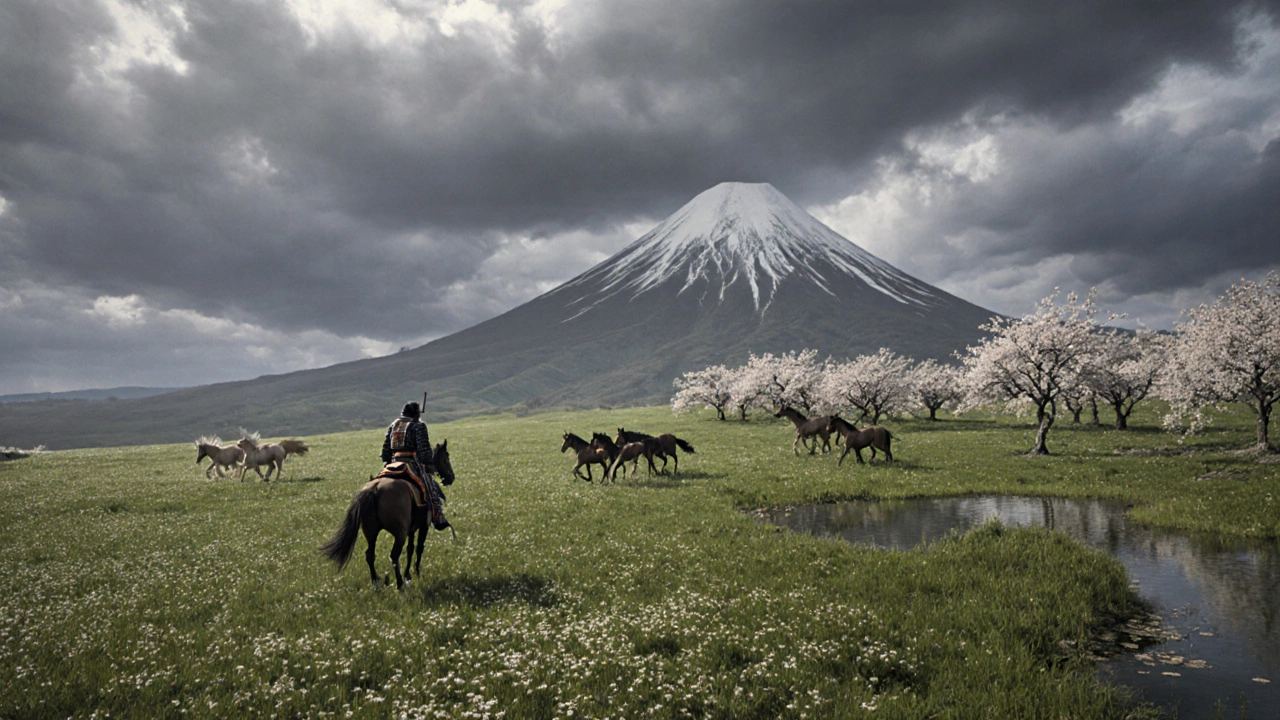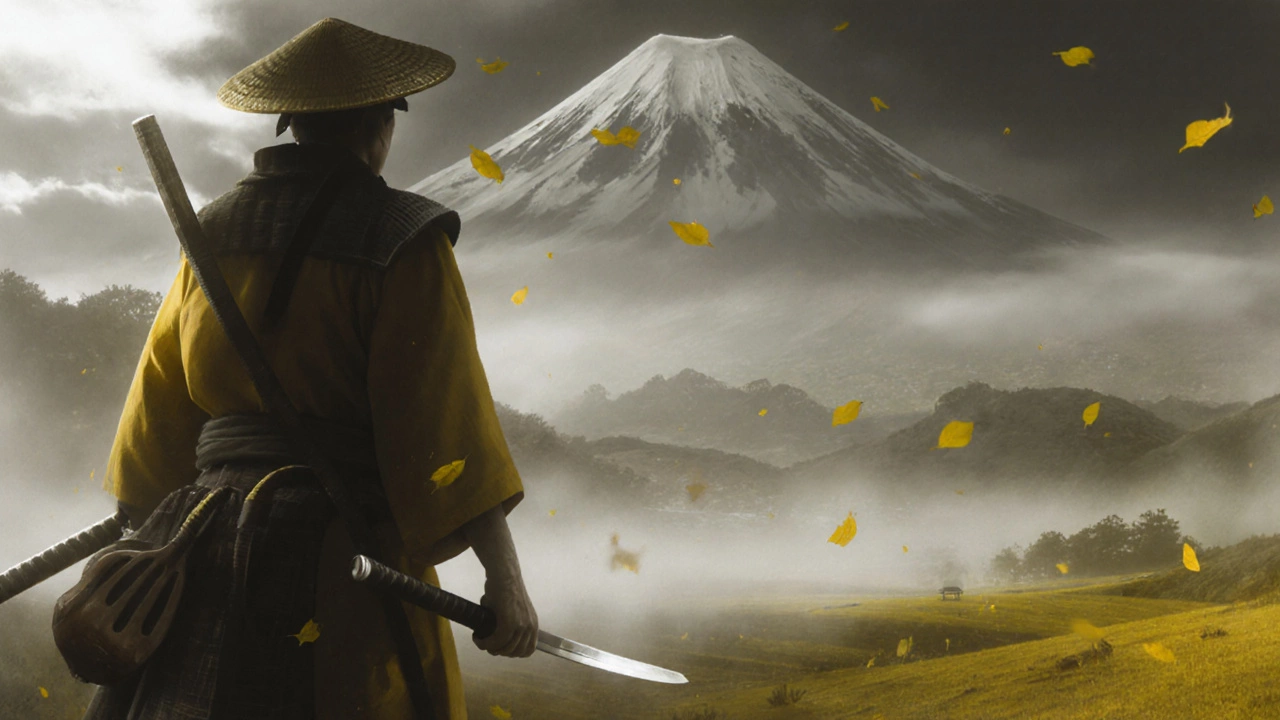Story and Characters
When I first booted up Ghost of Yōtei, I expected another samurai‑style adventure that leaned heavily on the aesthetics of its predecessor. What I got instead was a tightly wound revenge story that feels more like a personal drama than a typical action blockbuster. The game opens on a devastated village in Ezo, where the young Atsi watches her family get slaughtered by the notorious Yōtei Six. That opening alone hits hard, and it sets the tone for the whole 30‑hour journey.
Atsu (the name is spelled with a single "s" in the game, but fans often call her Atsi) is far from a typical hero. At the start she’s haunted, angry, and almost numb. Instead of giving her a shiny superhero vibe, the developers let her wallow in grief, letting you feel the weight of every loss. As you progress, you see her slowly loosen the grip of bitterness, thanks mainly to two relationships: the stoic warrior Oyuki and the enigmatic spirit of her mother, who appears in flashbacks tied to music and memory.
The flashback mechanics are a clever trick. They drop you back into Atsu’s childhood at just the right moments—like when you’re about to face a new boss—so you instantly understand why that enemy matters. It’s not just “kill the boss because he’s bad”; you see the child’s terrified eyes, hear the lullabies her mother sang, and the motive becomes crystal clear. Those moments are why the story feels intimate, even if the larger plot points—like the Yōtei Six popping up just out of reach—can seem a touch convenient.
Lord Saito, the main antagonist, deserves a shout‑out. He isn’t a cartoon villain with a permanent scowl. The game gives him moments where his own grief and duty come through, painting him as a leader forced into harsh choices. When you finally clash with Saito, the fight feels less like a final boss showdown and more like two wounded people finally meeting on a battlefield of shared trauma.
Companions play a huge role in softening Atsu’s edge. Oyuki, for example, often challenges Atsu’s single‑minded drive with quiet wisdom. Their banter feels natural, not forced, and it helps the player see that vengeance isn’t the only way to honor the past. The game also drops subtle nods to Japanese folklore—like the Kitsune encounter—that weave cultural texture into the personal story.

Gameplay and World
From a mechanics standpoint, Ghost of Yōtei builds on the solid foundation Ghost of Tsushima laid, but it refines the combat loop for faster, more visceral encounters. Early missions act like a tutorial disguised as a story beat; you learn to parry, dodge, and chain combos while chasing down minor Yōtei scouts. Once you’re comfortable, the game throws tougher opponents that force you to think about weapon choice.
Single swords work best against foes who mirror your speed—think quick katana duels. Dual katanas, on the other hand, shine when a wave of spearmen charges at you. The developers added a subtle stamina management system that rewards timing over button mashing, so the combat stays fresh even after dozens of hours.
The setting of Ezo is a character in itself. Dark, rain‑soaked forests, jagged cliffs, and towns shrouded in mist give the game a gritty palette that fits the revenge theme perfectly. The weather isn’t just for looks; sudden storms can mask your approach, while clear moments let you hear the distant chime of a shrine bell—a reminder of Atsu’s lost family.
Exploration feels rewarding because the world is packed with small, story‑driven details. You’ll stumble upon abandoned shrines where a crowsong triggers a memory of Atsu’s mother playing the shamisen. Hidden caves contain relics that unlock new combat techniques, and every side quest subtly ties back to the main plot, reinforcing the idea that every corner of Ezo has a story to tell.
One of the standout design choices is the use of silence. After a brutal fight, the game often drops you into a quiet clearing where the only sounds are wind and distant waves. Those beats let you breathe, reflect on what you just did, and set up the emotional punch of the next encounter. It’s a simple trick, but it works like a charm.
There are a few hiccups, though. Some of the Yōtei Six escape just as you think you’ve cornered them, which can feel frustrating after a tense chase. A few optional story branches feel under‑developed, leaving you wishing for deeper choices. Still, the overall experience stays engaging because the core loop—hunt, fight, remember—remains tight.
In terms of length, the main storyline clocks in around 30 hours, but a healthy amount of side content can easily push you past the 40‑hour mark. That’s a solid amount of content for a sequel that doesn’t rely on repetitive fetch quests. It feels purposeful, like each mission pushes Atsu’s arc forward rather than padding the playtime.
To sum up the technical side, the graphics are crisp, the frame rate stays steady, and the sound design—especially the use of traditional instruments during flashbacks—adds an extra layer of immersion. The game runs smoothly on both next‑gen consoles and high‑end PCs, showing that the developers gave the engine a good tune‑up.
All in all, Ghost of Yōtei manages to blend a familiar revenge narrative with fresh emotional beats and refined gameplay. It proves that a story about vengeance can still surprise you when it’s told with heart, even if some plot points feel a bit predictable. The game stands as a worthy follow‑up to Tsushima, carving its own niche in a darker, more personal corner of the samurai universe.
